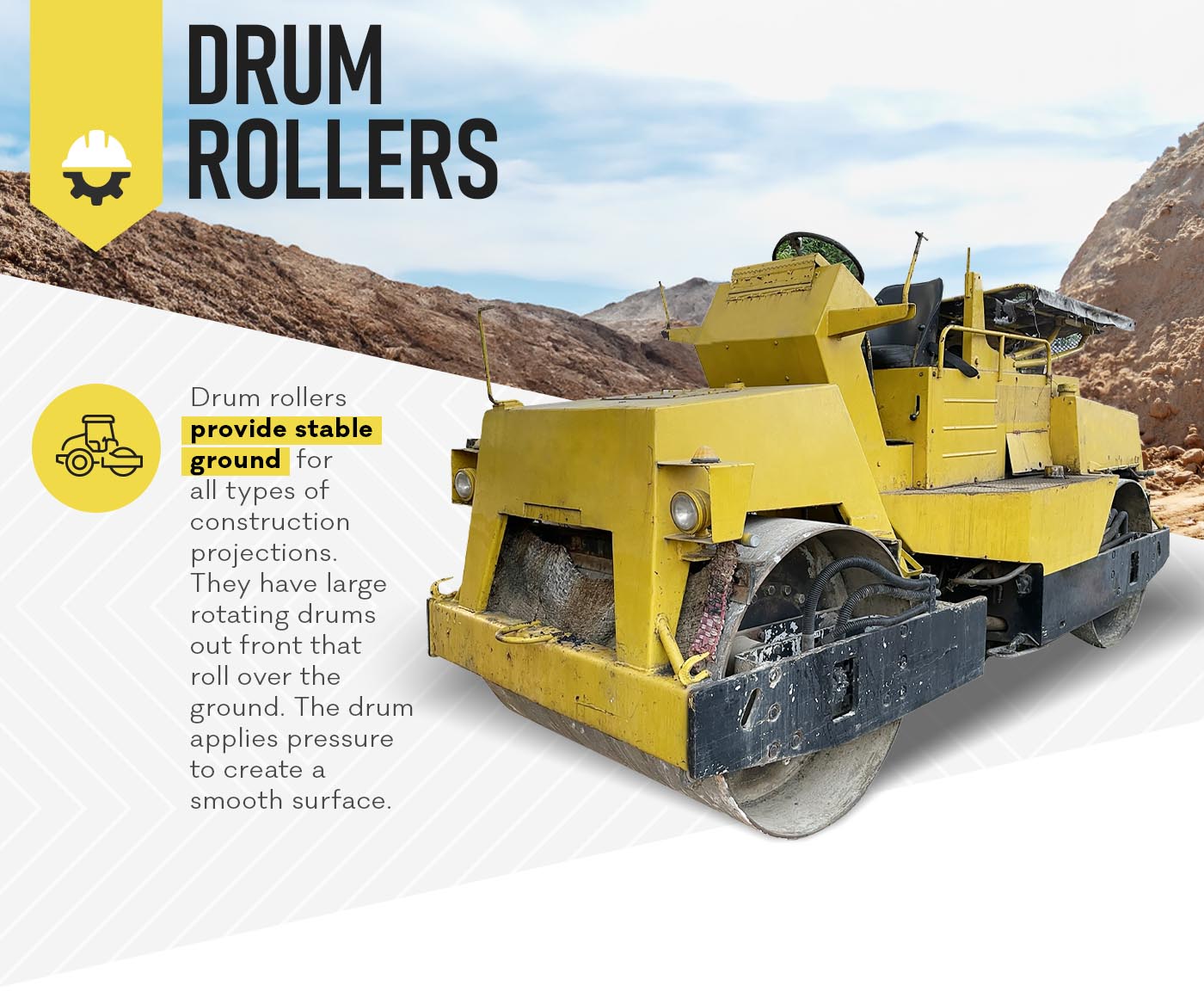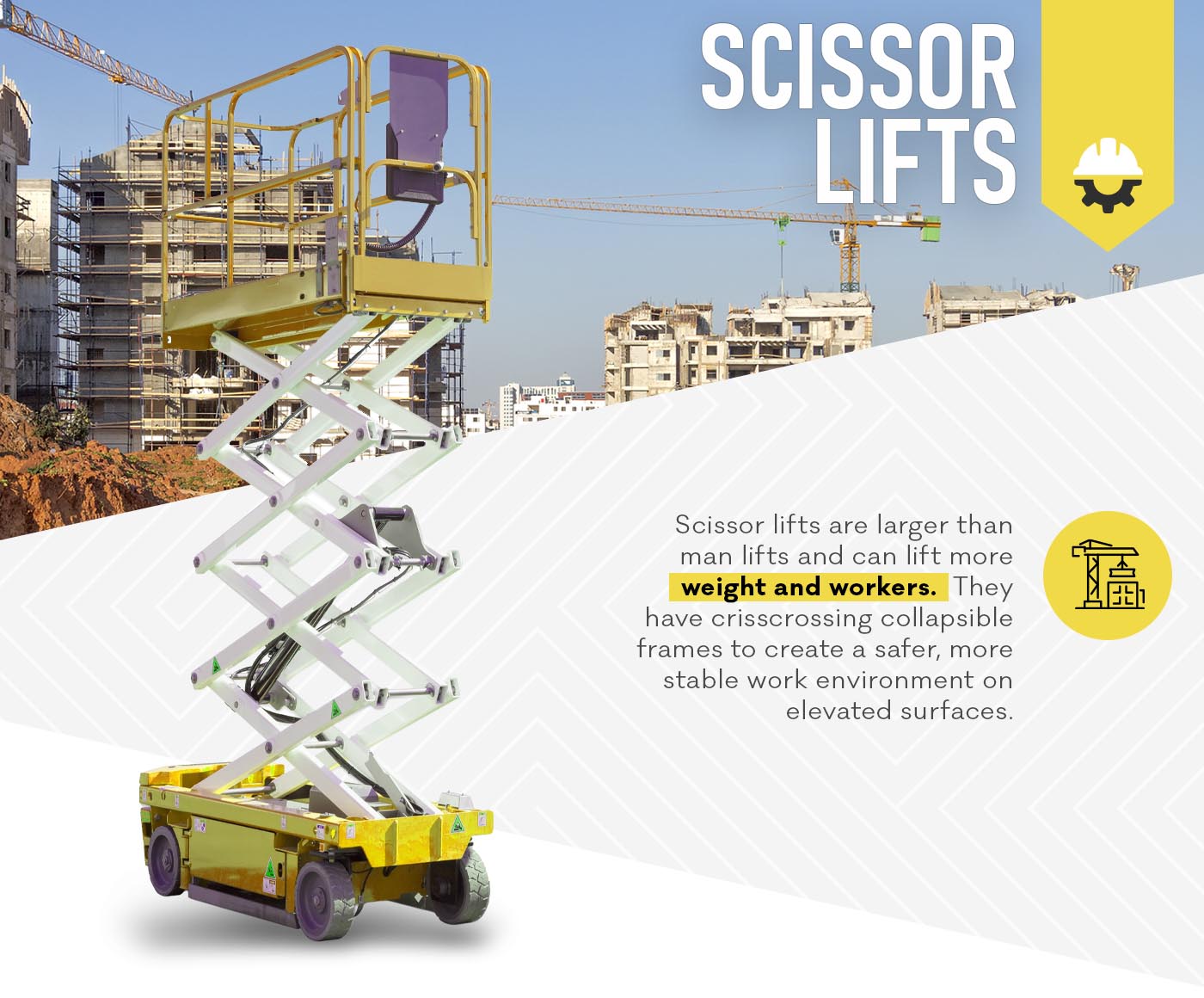Equipment Guide: 14 Common Types of Construction Vehicles
Jun 20th 2024

Every construction worker should be familiar with the types of vehicles used on the job. Most companies and crews employ a variety of machines to excavate, haul and pave. These vehicles have powerful engines and hydraulically controlled features that require regular maintenance to do the job safely and efficiently. The latest U.S. Construction Equipment Market Forecast projects that by 2029, there will be 486.8 million equipment units in the industry, worth around $57.1 billion.
According to the U.S. Bureau of Labor Statistics, there are 483,300 construction equipment operators, making, on average, $55,270 per year or $26.57 per hour. Learn about the different types of construction vehicles, their services and the necessary repairs to keep your workers safe and on task.
14 Types of Construction Vehicles
1. Concrete Mixers
Concrete mixers have large rotating drums that mix water, concrete and other natural materials to pave our roads and streets. The drum spins continuously to prevent the contents from drying. It’s powered by a hydraulic pump that rotates it in either direction. Workers attach chutes to release the fresh concrete. They park near where the materials are being laid to give the team a constant supply of concrete at the ready.
2. Pavers
Pavers distribute asphalt evenly over the ground. They use tracked pavers that compress and flatten the materials, adapting to various surfaces. They are used wherever asphalt needs to be laid, including sidewalks, driveways and parking lots. The hopper is filled with fresh asphalt and can store several tons at a time. Feeding conveyors move the material to the back augers, which place it on the ground. Drivers can control the flow of materials based on the width of the new pavement.

3. Drum Rollers
Drum rollers provide stable ground for all types of construction projections. They have large rotating drums out front that roll over the ground. Some have flat drums to flatten the earth before industrial materials like concrete and asphalt are laid. Others have textured drums to compact coarse soil. The drum applies pressure to create a smooth surface. They usually move slowly and navigate tight spaces to reach every square inch of the workable terrain.
4. Bulldozers
Bulldozers push and plow the heaviest loads and obstacles. They have a galvanized front with blades to break up soil, gravel and structural debris. The blades extend up to 30 cubic yards to cover as much ground as possible. Similar to excavators, some have rippers in the back to drill holes. They are some of the hardest-working vehicles on site, with maximum operating weights of over 200,000 lbs.
5. Dump Trucks
Dump trucks haul away everything that needs to be removed from the job site, including broken concrete, structural debris, agricultural waste and the contents of buildings slated for demolition. They can haul over 20,000 pounds or even several tons without breaking a sweat. The open bed has a hinge that lifts the storage compartment during unloading so the materials slide off the back and into the dumpster. A hydraulic power source sends fluid to the cylinders to raise or lower the dump bed.
6. Excavators
Excavators have rotating cabs with large arms attached for digging up the earth and moving large obstacles out of the way. They often dump their contents into a dump truck to be hauled away. Like many construction vehicles, they have rigid tracks that can ride over all types of terrain. They are usually one of the first vehicles on-site, making space so the work can begin.

7. Feller Bunchers
Feller bunchers are designed to remove and collect tree growth for construction projects and the lumber industry. They are similar in construction to excavators but have a special saw to cut through wood and a grapple to pick up the fallen log. They are used in wooded areas and those with a lot of overgrowth.
8. Backhoe Loaders
Backhoe loaders plow debris and dig holes around the job site. The front has a large plow that can lift obstacles and push them to the side. The back has a digger, auger or ripper that lays materials, breaks up the ground or drills holes. Using the same vehicle allows the crew to complete two tasks at once.
9. Cold Planers
Cold planers clear damaged asphalt and concrete from the job site so they can be recycled and new materials can be laid. They run on tracks and have a large cutter attached to a rotating drum to break up the pavement. Drivers control the depth of the blade based on concrete thickness. Excavators, bulldozers and dump trucks then haul the broken asphalt away.
10. Graders
Graders prepare the ground before asphalt and concrete are laid. They use a long horizontal blade to slope and grade the soil to create a flat surface for installation. Some models have compactors for leveling the soil and hydraulic brooms to sweep up loose debris.

11. Forklifts
Forklifts move and lift heavy objects around the job site. They have two forks in the front that can be raised or lowered. The forks slide underneath the pallet to lift the weight securely. Drivers approach the pallet openings straight on and keep the weight centered during transport. Indoor forklifts have wheels and are commonly used in warehouses and retail settings, while outdoor models have durable tracks to move materials over rugged terrain.
12. Boom Lifts
Boom lifts help construction and utility workers reach high places. They have a rotating cab with an extendable hydraulically controlled arm that moves the platform up to 200 feet vertically and 115 feet horizontally. They are often used to reach building exteriors, telephone poles, electrical wires and scaffolding. Workers on the platform control the lift speed and height.
13. Man Lifts
Like boom lifts, man lifts have a raisable platform to move workers and materials vertically. However, it uses a collapsible frame and can only move up or down instead of an extendable arm that can move in any direction. The operator can drive the vehicle forward or back until they are directly under the destination.

14. Scissor Lifts
Scissor lifts are larger than man lifts and can lift more weight and workers. They have crisscrossing collapsible frames to create a safer, more stable work environment on elevated surfaces. Depending on the make and model, scissor lifts run on diesel, hydraulics or electricity. Diesel lifts have added weight capacities to move construction materials vertically. Lifts on construction sites often have off-road tires to get through the snow and dirt. They need to be parked on level surfaces to reduce leaning.
How Do Construction Vehicles Work?
Most construction vehicles have diesel engines, which deliver more horsepower and torque at lower RPM than gas engines. They use highly compressed air and fuel to haul heavy loads at all speeds. The extra torque helps you accelerate quickly when towing heavy loads, providing better handling and more control.
Most construction vehicle accessories are powered by hydraulics. They provide smooth, efficient mechanical movements to improve precision, reduce accidents and create solid foundations. The hydraulic system is made up of hydraulic oil, which runs in a closed loop.
When the driver activates the accessory, the system pump pushes fluid from the reservoir to the valves that control the component to get it to move, often with the help of an electric motor or hydraulic actuator. Compared to other supplementary power systems, hydraulics have fewer moving parts to reduce the chances of error.
These vehicles also have tracks or tires with aggressive tread patterns to wade through the dirt, mud and snow. They are designed to operate on unpaved surfaces and move through or over obstacles.
Maintaining Construction Vehicles
Diesel engines operate under extreme pressure and temperatures. Every engine needs a constant supply of high-quality oil for lubrication and to pressurize the fuel before it’s injected into the combustion chamber. The fuel injectors release the fuel as a fine mist to optimize fuel efficiency. Check your oil levels before every shift and change your oil at the recommended service intervals. Change the oil more often when hauling heavy loads and operating in warm weather. Monitor fuel consumption and injection pressure to maximize efficiency.

Diesel RAM and Ford pickup trucks are often used as construction vehicles. The Ford Powerstroke 6.7-liter engine powers the Ford Super Duty F-250, F-350 and F-450, and the F-350, F-450 and F-550 Chassis Cab. The 6.7 Powerstroke oil capacity is 15 quarts (14.2 L).
If the engine is losing power, burning more fuel than necessary or making grinding or hissing sounds, you may need to replace your fuel injectors. The oil picks up rust and debris from various systems. If oil levels drop precipitously or fuel pressure remains low, replace the valve gasket cover to seal the oil around the cylinder heads.
The engine uses air, oil, fuel and exhaust filters to remove debris and sticky carbon deposits. Construction sites are known to spread dirt and dust, which can clog the air filter and spread debris throughout the engine. The turbocharger forces more air through the engine to burn more fuel and boost your vehicle. Debris can clog the turbo actuator, which acts as a pressure release valve to control the amount of air going through the turbine. Replace the turbo actuator if you’re burning more fuel than usual or having trouble boosting.
Maintain coolant levels to avoid overheating the engine. If you suspect a leak, replace the coolant pump and exhaust gas recirculation (EGR) cooler. Clean the radiator terminals to let heat escape.
Shop All of Our Diesel Products
Electrical Maintenance
Remove dirt and debris from the battery terminals, test the voltage output and inspect the electrical connections that power the motor. Cold weather reduces electrical performance, making the battery less effective over time. Water can cause corrosion. Replace worn batteries as power diminishes and use a battery heater to insulate them from the cold when leaving them on the job overnight.
Hydraulic Maintenance
Maintaining the hydraulic system reduces the chances of your equipment accessories failing on the job. The hydraulic system runs on pressurized hydraulic fluid. Water, dust and dirt can contaminate the fluid reservoir, which leads to rust and clogs that reduce fluid pressure.
Inspect fluid levels and quality before using the machine. Change your hydraulic fluid and replace the filters at the recommended service intervals. If the fluid gets dirty quickly after a change, flush the hydraulic system to remove dirt and debris. If pressure remains low, you may need to replace rusted or clogged valves, actuators and the hydraulic fluid pump. Monitor the fluid temperature to limit overheating.

Tire and Track Maintenance
Inspect and adjust the tire pressure to the recommended psi at the start of every shift. Adjust pressure based on the terrain. Use a lower psi in the sand to maximize surface contact and high psi levels when traveling on rocks and gravel. Replace punctured tires and tracks with worn tread patterns. Remove stones and debris from crevices to improve traction. Rotate the tires at the recommended intervals to distribute wear and tear evenly.
In Summation
Every piece of equipment you encounter on the job has an engine, motor or pump that needs servicing. You and your crew can use these preventative maintenance tips to reduce the risk of accidents and delays that cost your business money. Follow the latest safety guidelines and recommended service schedules and complete the required training before operating these machines to maximize safety and efficiency.
Image Credits
Intellson/Shutterstock.com
Skylines/Shutterstock.com
mosher/Shutterstock.com
Strawberry Blossom/Shutterstock.com
anmbph/Shutterstock.com
Maxx-Studio/Shutterstock.com
Dmitry Kalinovsky/Shutterstock.com
Opek Manuver/Shutterstock.com
Deek/Shutterstock.com
Christian Nastase/Shutterstock.com
Bannafarsai_Stock/Shutterstock.com
Gorloff-KV/Shutterstock.com
